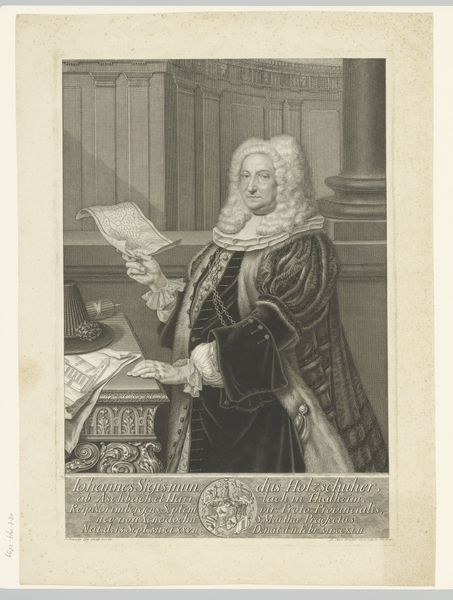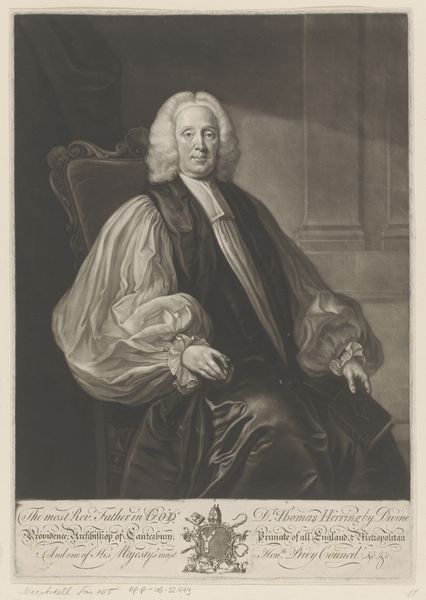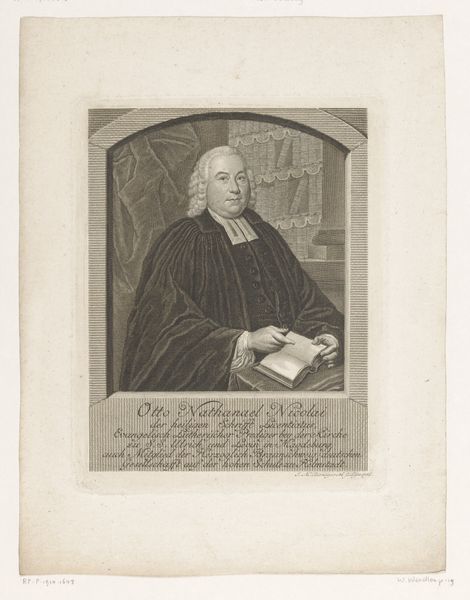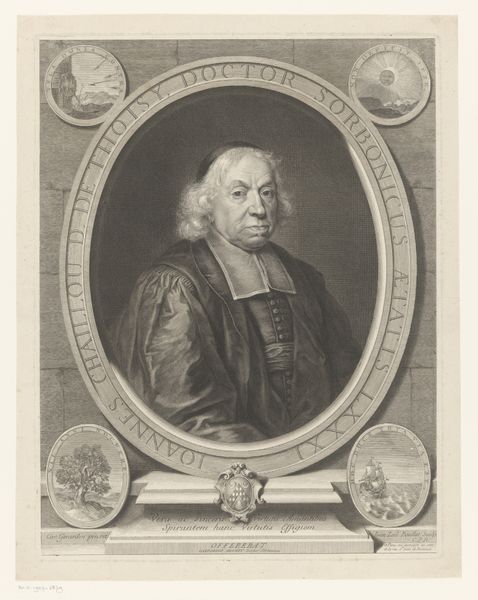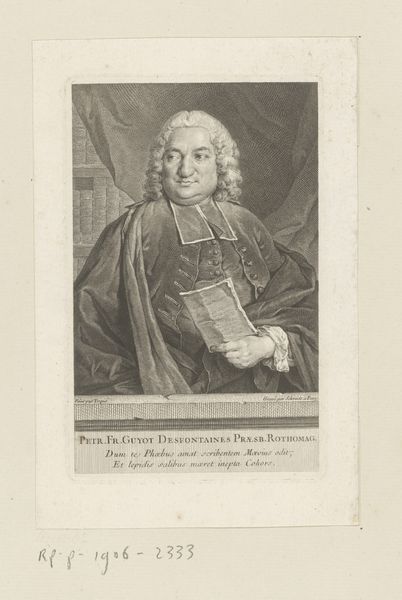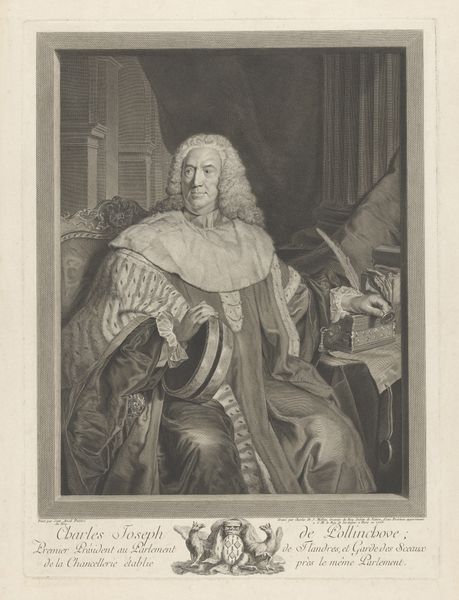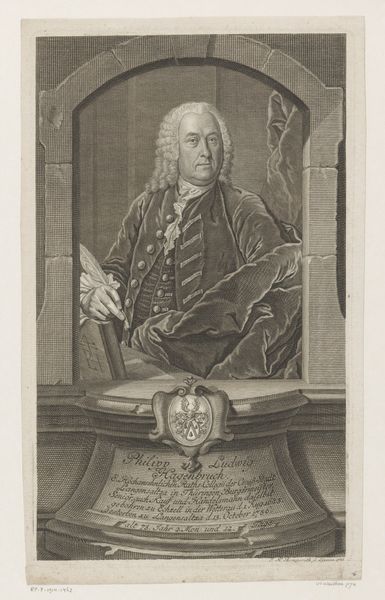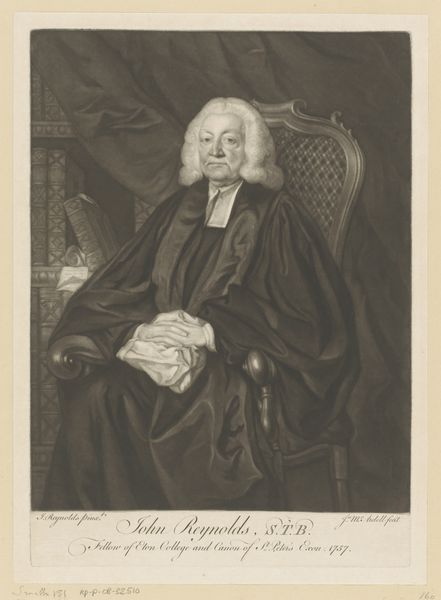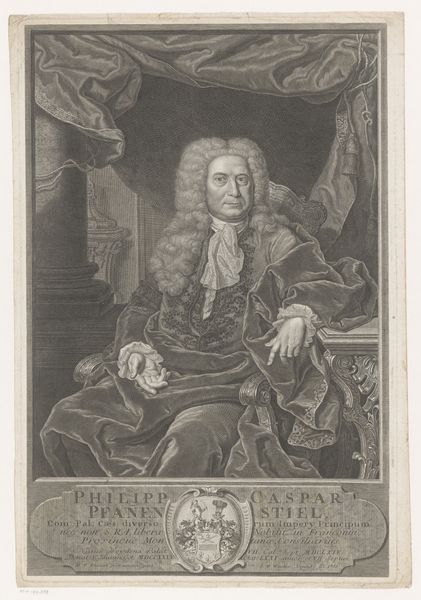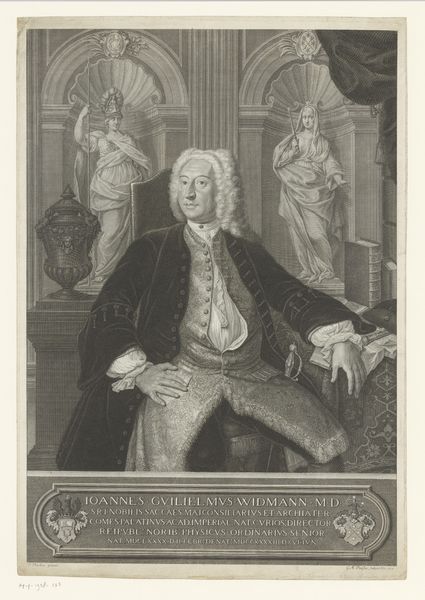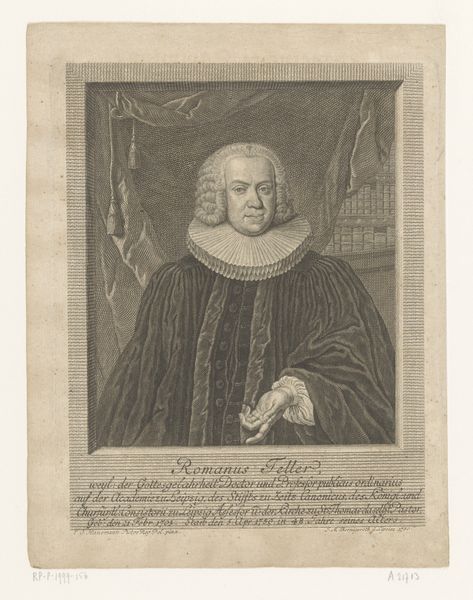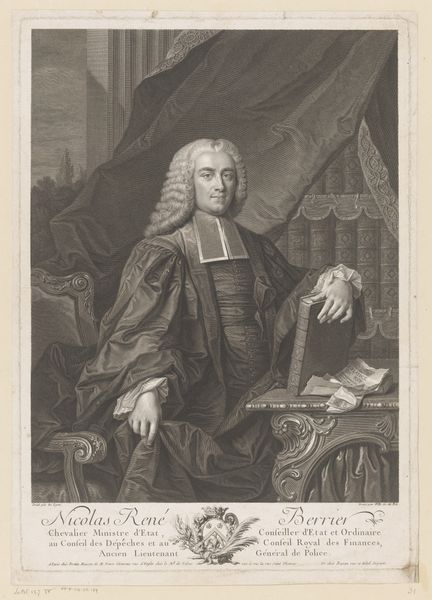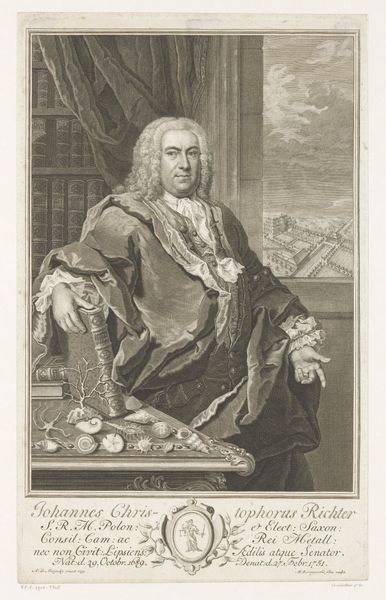
Dimensions: height 370 mm, width 258 mm
Copyright: Rijks Museum: Open Domain
Editor: Here we have Michael Rössler’s "Portrait of Georg Birckner," an engraving from 1740, at the Rijksmuseum. I’m immediately struck by the detail achieved through the engraving process. It’s quite formal and imposing. What draws your attention in this piece? Curator: The engraving is more than just an image; it's a product of labour and material. Consider the copper plate itself: mined, refined, and painstakingly etched. The image serves a purpose: not just to depict Georg Birckner, but to communicate his status as a merchant and member of the council of Nuremberg. What was the social and economic context that enabled and, indeed, necessitated this kind of portraiture? Editor: That's fascinating. I hadn't thought about the actual process so much. I guess I was focusing on the kind of frozen expression on the face. Is that also a deliberate message? Curator: Absolutely. The formal pose, the luxurious fabrics of his robe, the books symbolizing knowledge and authority—these are all carefully constructed elements aimed at conveying power and stability. Think about the labor involved in producing his clothes, wig, all signaling position and wealth. Where were the textiles sourced? Who made them? These details ground the image in a very specific material reality. How does this context change our understanding of the subject? Editor: So, looking at the materials and the work behind them gives you a richer, more critical understanding of what the portrait actually communicates. Curator: Precisely. By focusing on the materials and the labor involved, we can unpack the layers of social and economic meaning embedded in the image. Editor: This has changed my perspective a lot, seeing this portrait less as a snapshot of a person and more as the result of many different processes and values coming together. Curator: Exactly. And in doing so, we move beyond a simple appreciation of aesthetics and delve into the complex world of production and consumption in 18th-century Nuremberg.
Comments
No comments
Be the first to comment and join the conversation on the ultimate creative platform.
